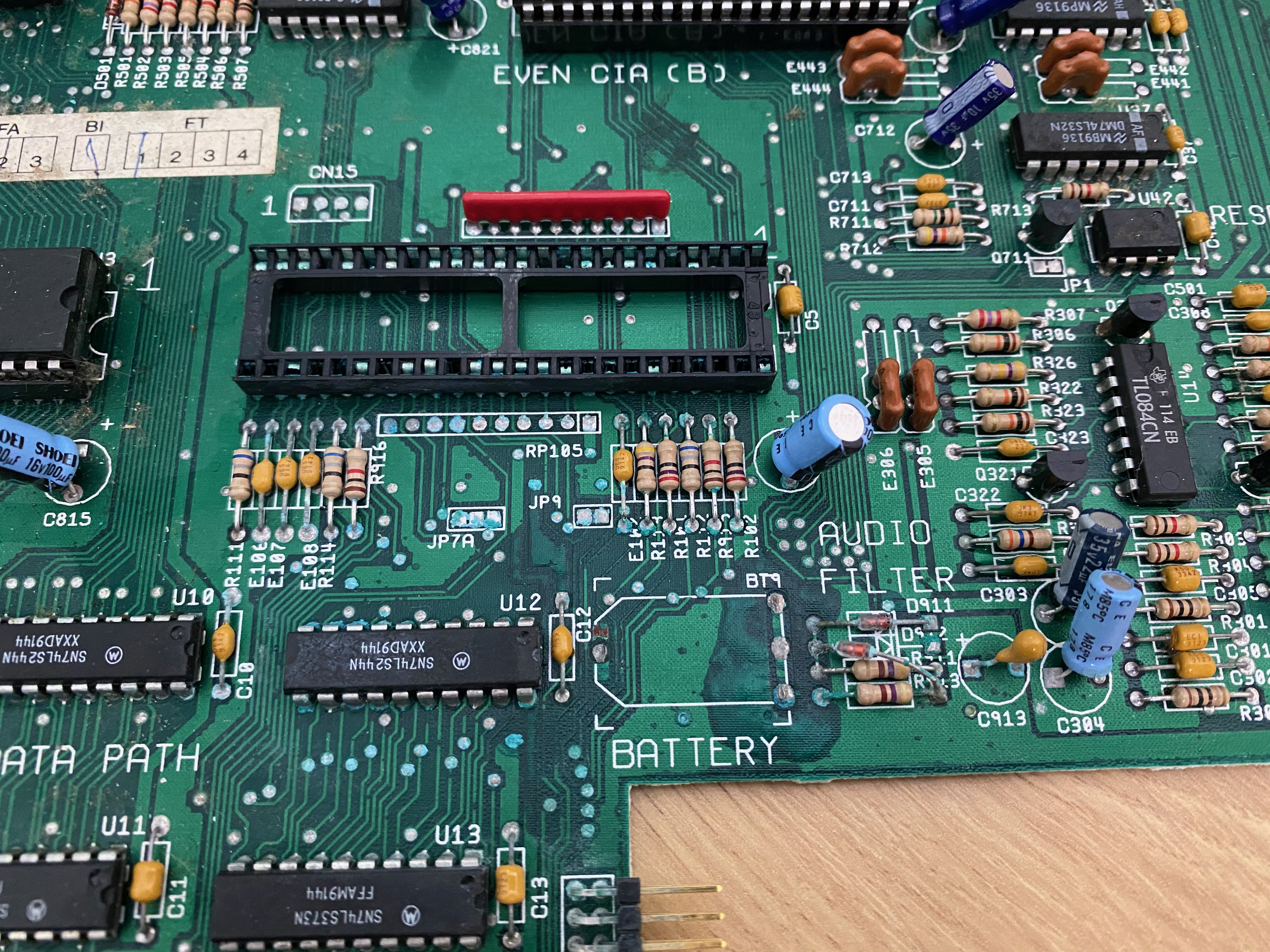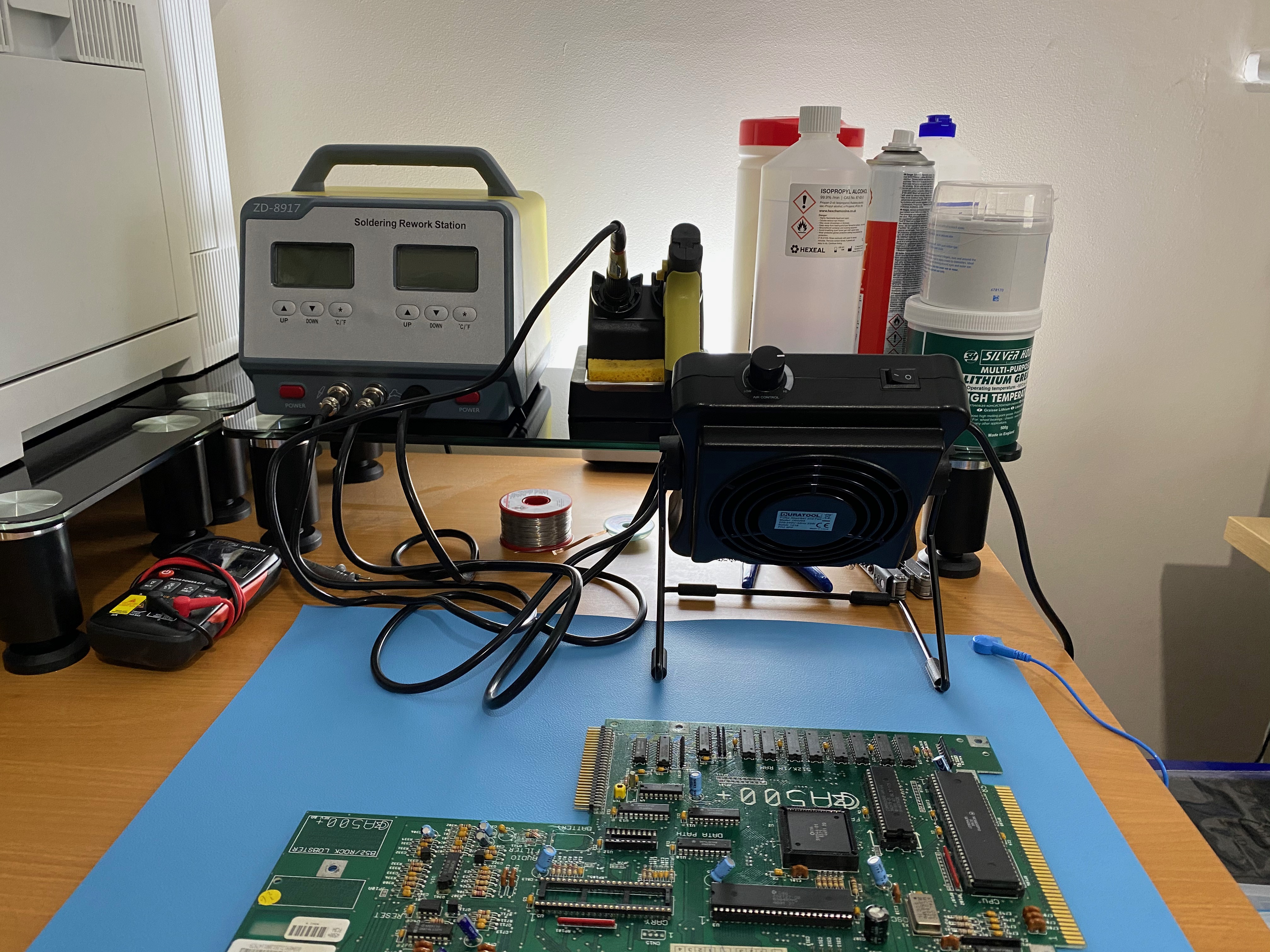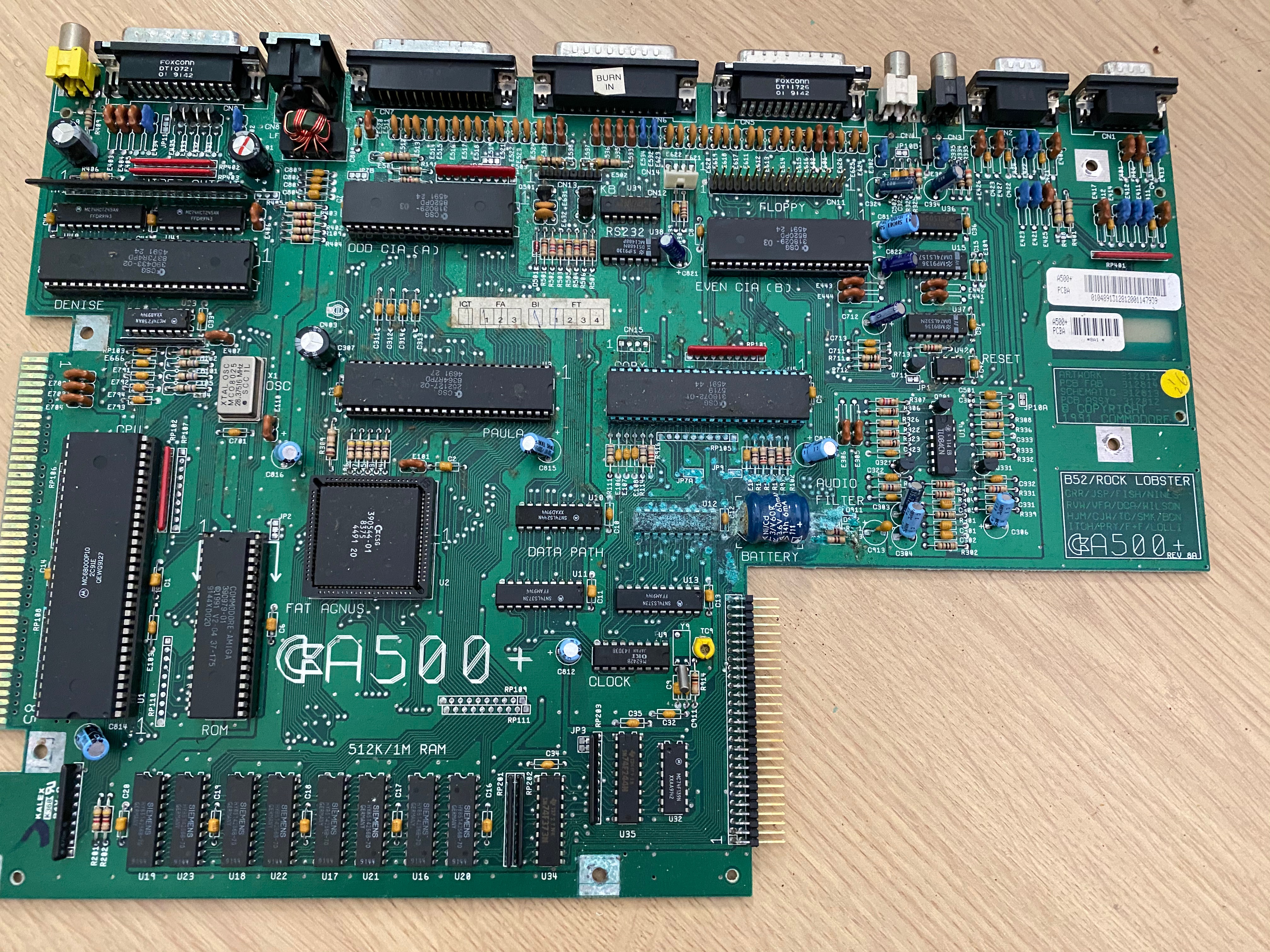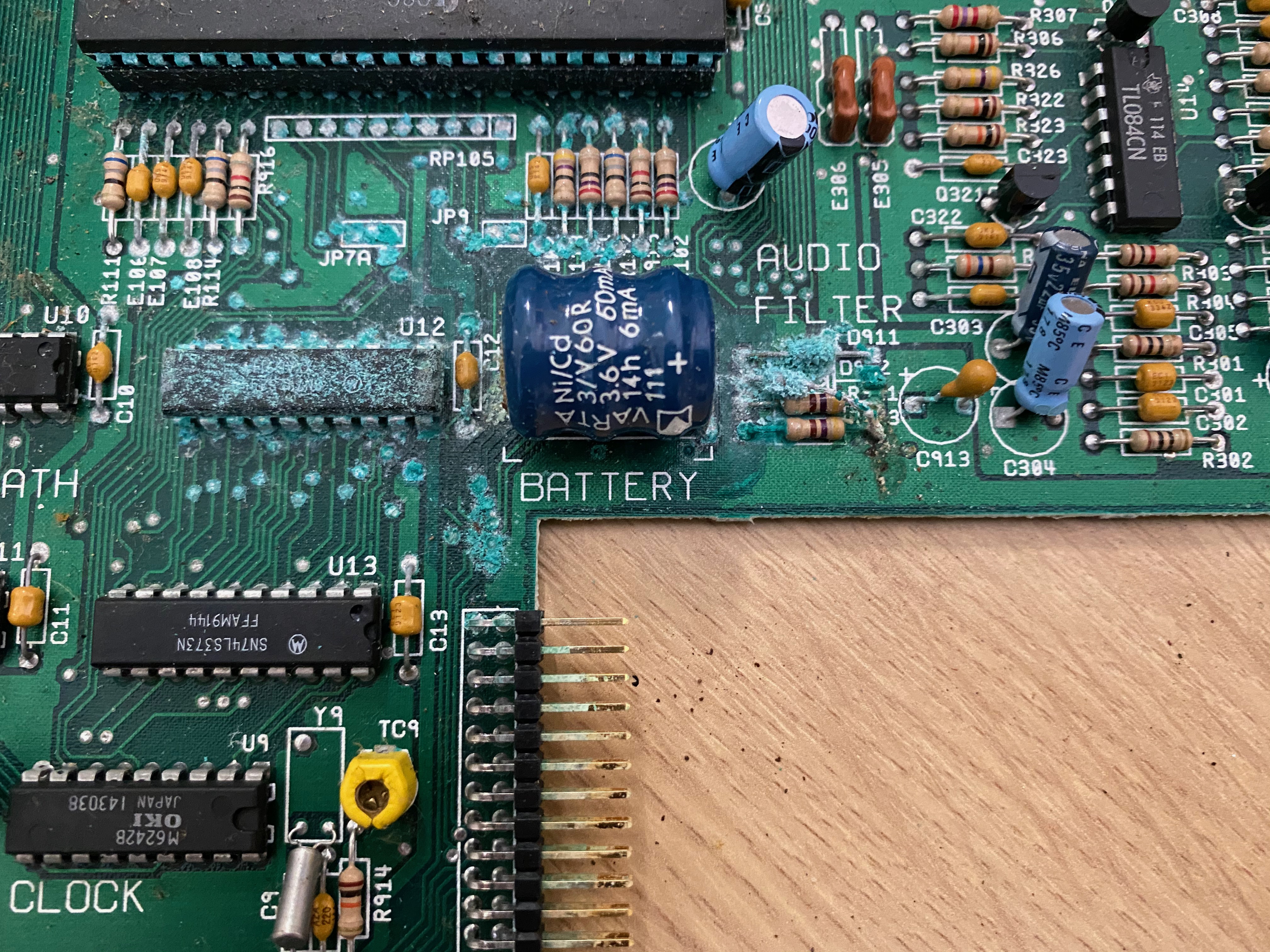Last month I acquired a faulty Amiga 500 Plus for a bargain price on eBay. I knew it was showing a black screen on power on and the keyboard was damaged (I had spare parts for that), what I didn’t know was just how bad the internal damage was. But I was up for the challenge.
First things first, I opened up the case, some corrosion and rust to the metals which isn’t a great sign, it was likely stored in a humid environment. There was also a 512KB trapdoor RAM card which I pulled out and plugged into my main Amiga 500 Plus, it worked and I’m keeping that in there for now.
The motherboard visual damage was pretty bad.
The battery corrosion was all over that 74LS244 chip, some of the passives and it had even hit Gary. The battery was immediately removed. I also pulled Gary out to see how bad it was, and many of the socket pins snapped off in the process, some of them staying attached to the chip!
Thankfully after a clean-up the Gary chip itself seemed fine in a quick test on another board. Now to clean up the board a bit, I put a few drops of white vinegar on the corrosion and let it do its work for a couple of minutes (this fizzed a lot). Then cleaned it off with de-ionised water and isopropyl alcohol. The change was dramatic.

Using a toothbrush and a fibreglass brush I managed to clean it up a little more.
Next up was de-soldering the Gary socket and the 74LS244. I couldn’t say for sure that the 74LS244 was internally damaged, but didn’t want to take the risk either. It was at this point I halted for a while, my office needed an upgrade so I could work on this and similar boards. I ordered a soldering station which had a de-soldering gun from Komerci in Germany.
In the mean time I buzzed around that area of the board with a multimeter to try and observe the hidden damage. 18 PCB tracks, mostly under the 74LS244, we broken. The damage was worse than I thought! Although the resistors all seemed fine and I think one of the diodes may be damaged.
After my solder station arrived I set up a new area of my office.

I got to work de-soldering the chip and socket. This was tough work as the solder was fused with the corrosion which made it no longer solder. What should have taken a few minutes took a couple of hours, some flux, some braid, a hot iron and the de-soldering gun to sort out. The ground plane in particular was very difficult on the Gary socket.
The new sockets were soldered on (thankfully this only took a couple of minutes) and this is the state of the board as of yesterday.

Before I put new chips in it (I have a replacement Gary just in case and a replacement 74LS244), I need to re-route the known bad PCB traces. This will take a little bit of time, so something I’ll come back to for the next part in this series.




Leave a Reply